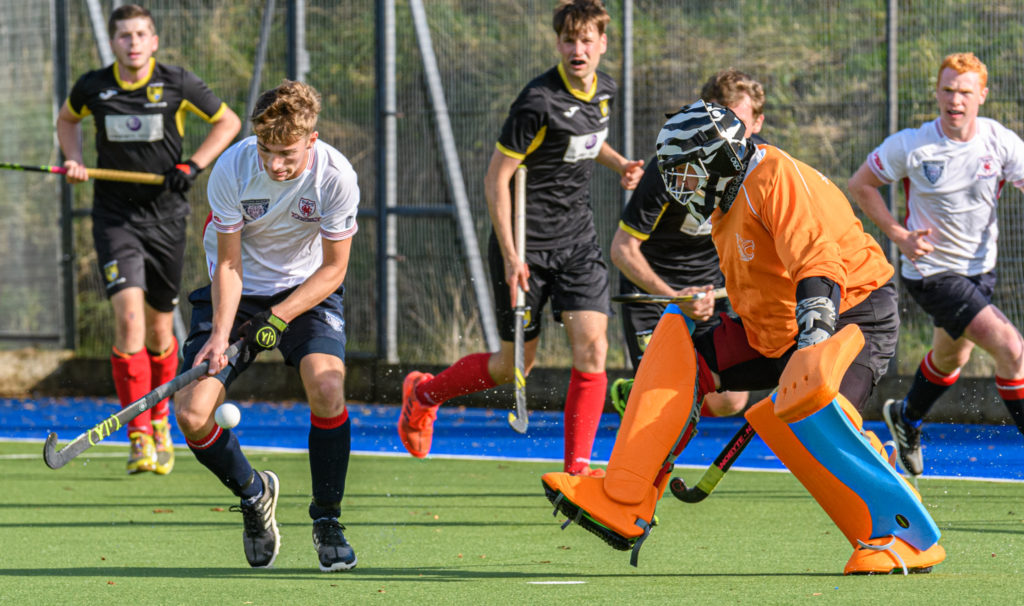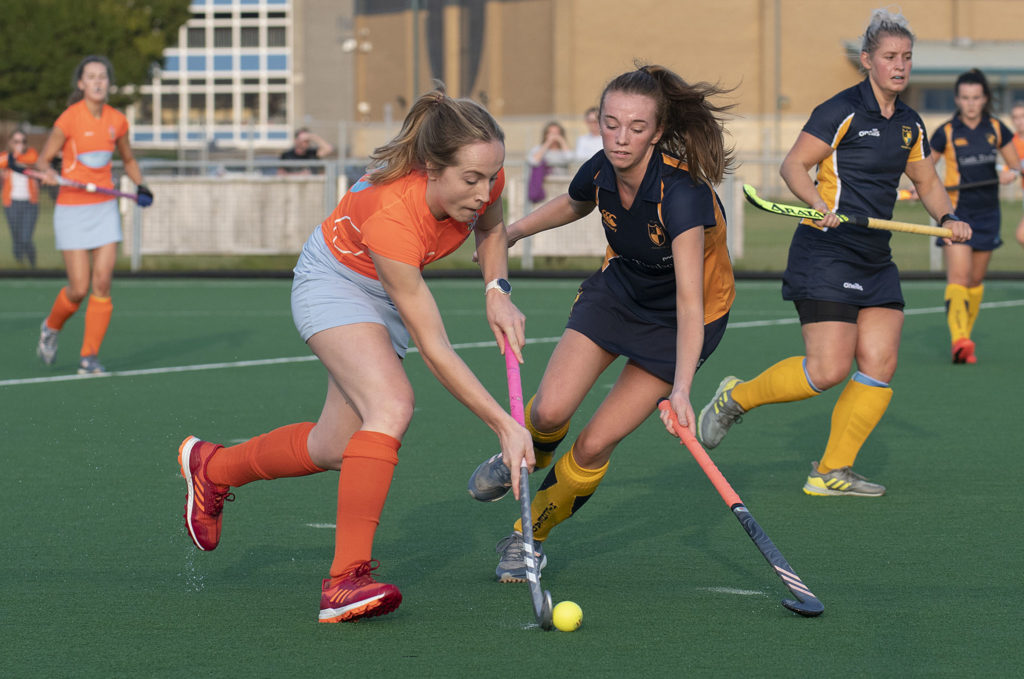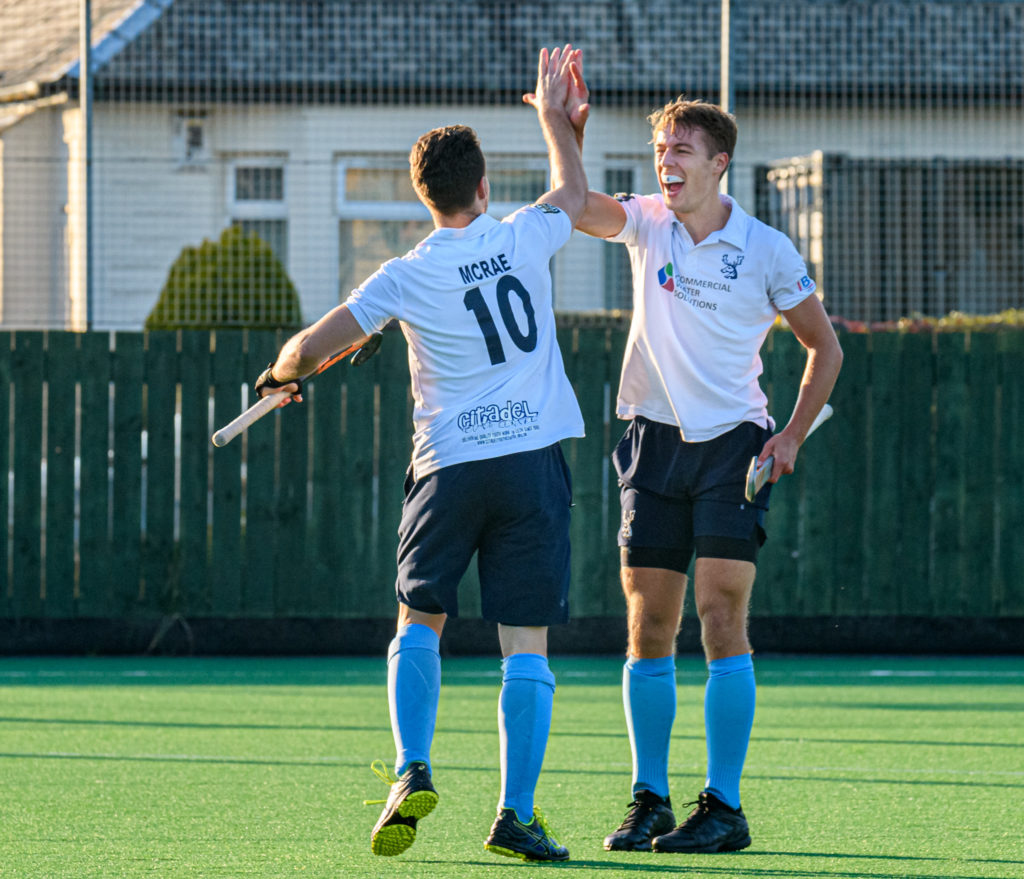This year sees a change at the top for Scottish Hockey (S.H.) – the national governing body for field hockey. It’s not a member of the coaching staff, or an executive within the organisation, it’s the new top division for men and women in the country.
I spoke to Andy Tennant, who is the Head of Performance at Scottish Hockey. Originally from Prestwick, he played international level cricket for Scotland, before moving into performance coaching and other related work within the world of governing bodies. He has been working with Scottish Hockey now for approximately two and a half years, having made the jump from the other bat and ball game of his younger years. We talk a bit about the transferable skills that he brings across. Knowledge of performance systems is important to him in this role. He doesn’t get involved in tactics, or player selection, but he looks to share his knowledge of the latest practices and concepts of what happens in other sports. He tells me that communication is important, especially as a tool of selling change to people involved in hockey in this country.

Andy describes his job as making sure that all of the performance related systems work properly to help produce elite level athletes. There is a strong element of working alongside coaches and managers from across the top level to help them stay ahead of the curve. He is also looking to aid the national team players and coaches on a path to succeed in order to provide inspiration for the next generation. In terms of youth, he also looks at how Scotland can best to develop young talent to be ready and able to progress. For this he strives to help support develop the coaches and give them the tools and abilities that they need to educate the players. Lastly, he is involved in what he calls ‘Project Premiership’ which has started this year to support the elite level of the domestic game and is intended to give performers a higher platform or springboard to improve the national team.
Although he states that his predecessor had done a good job in difficult circumstances, he felt that Scottish Hockey needed to take more of a central control of the performance elements of the game. When asked why S.H, have brought in the new Premier League format the answer was straightforward.
“The difference in standard between the pinnacle of club hockey [in Scotland] and international hockey has grown…”

Andy reckons that the number of good players staying at the top level of the game is dropping. He says that although there are still good players at the top level of their clubs, the drop out rate, due to social change is leading to a higher attritional rate means that there are is a smaller pool of talent to choose from than there used to be. Although there is some excellent young talent coming through, these players need time to learn. This compared to the standard of play at the elite level of international hockey is leaving the Scottish team with a gap to bridge. This is where the new league comes into place. He wants to support the clubs to raise the standard and to produce a better product.
After an internal conversation, S.H. invited representatives form all of the top division clubs and asked the question of ‘How do we make things better?’ The agreement was to implement a series of changes to the top division for men and women over a three year period. Some of these were quite simple, such as amending the time and format of domestic matches to be in line with FIH rated competitions, which means four quarters. Additionally, the idea is to introduce a ball patrol at games in order to speed things up and work is being done to promote the brand better, stream games and hopefully attract more fans… There will also be changes to the playoff structure. No longer will the bottom four teams in a ten team league drop into a relegation fight at the end of the season, which will, hopefully, prompt the mid level sides to develop a more positive hockey style of play and take more risks, such as giving younger players more game time. Somewhat bigger, though, is the creation of the Premiership Management group. Here five club representatives sit on a committee in order to give the clubs and their members greater control over the league that they play in, instead of just being dictated to. By the second year, Andy tells me that there will be an active platform established for clubs to make better use of video analysis as a tool of improving performance, coaching and player development. The technology used here could also help with broadcasting matches and moving the game into the mainstream of sporting culture within Scotland.

One thing in particular, though, which will be important for the success of this idea will be the ‘Power of Ten’ concept within the league. Scottish Hockey wants each and every club in the top flight to be strong, so that ‘every game is a tough game.’ This means that they will have to deal with the trend of players moving towards the top two or three clubs and perhaps not necessarily getting as much game time as hey would like and also weakening the sides at the bottom end of the division. The way that Andy says to get around this is to work alongside all of the high performance teams in order to retain their exciting youngsters by looking at the programmes that they run and raising the professionalism within these areas. It is a long term solution to a problem that exists now, so may take a while to come to fruition. There will have to be incremental changes so that these youngsters will be able to use the changes made this year as a platform over the next ten years, or so. One club that Andy uses as an example is Glasgow High Kelvinside (GHK for short), in the women’s Premiership. He tells me the they have quite a young squad and have a been doing a great job of developing those youngsters, but unfortunately have a tradition of losing players to more well established clubs. However, he sees potential to work with them here, as they have an ex Scottish international coaching them and he would very much like to help give them a fighting chance as a part of the ‘Power of Ten’ concept. He goes onto say that,
“We are all products of our own environment, so it tend to be, your best players are only a little bit better then the league they are playing in… The reality of the situation is that is you have a strong domestic league, producing lots of good players, then you‘ll have a strong national team.”
This seems to be the overriding philosophy to the reasoning behind the changes. The water mark for success will not only be with the national team, but also the club sides that qualify for the European Hockey League (EHL). The hope is that these teams will be stronger and able to do better at that level in the future and, actually, this would be a good method of judging how the concept of ‘Project Premiership’ is working. There are currently 15 Scottish players across the Great Britain set up, not only in the ‘A’ Team, but also the Elite Development Programme. He says that this is additionally important. As an example, Emily Dark and Charlotte Watson, who both play for Dundee Wanderers, are involved with GB and will be benefiting from that in terms of both their own standards, but also of those around them. To coin a phrase from an old mobile phone advertisement, the future is bright, the future is tartan.

